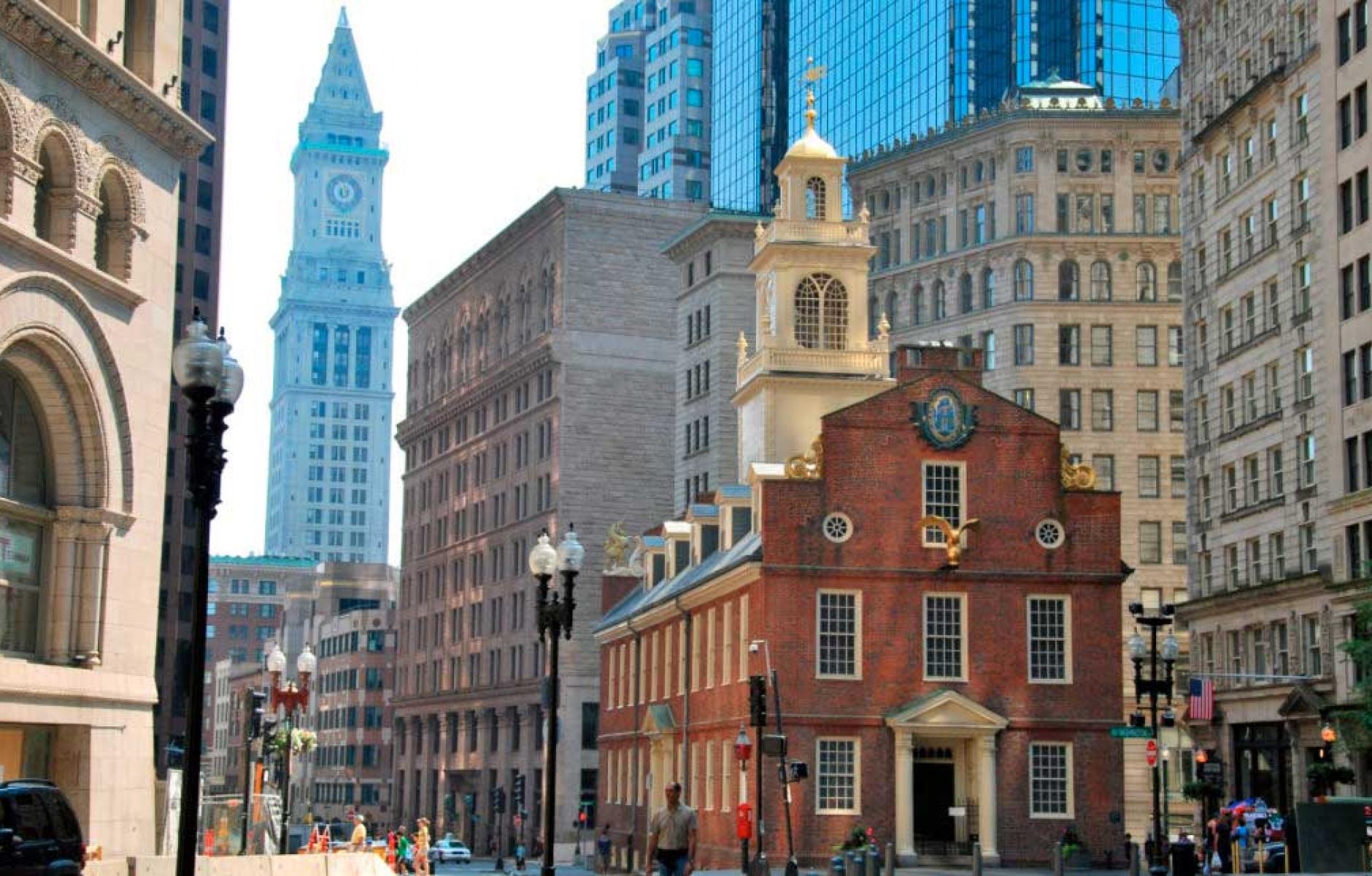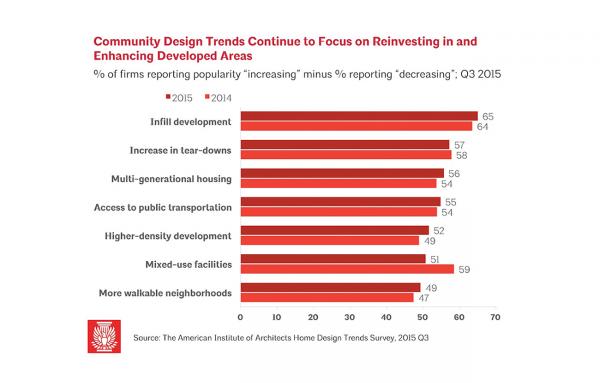
Three fundamental errors in architectural thinking and how to fix them
This article was previously published in Common\Edge.
Editor's note: Research by Ann Sussman, Justin Hollander, and Hanna Carr was presented at CNU 26 in Savannah, Georgia, on use of brain and cognitive science to better inform designers about how people perceive and experience their surroundings. Specific architectural elements, including punched windows, red doors, and flags, consistently attract the eye while blank facades, such as garage doors, do not.
To build better places for people we need to understand what makes great architecture work and what keeps it from happening. Here are three foundational errors in architectural thinking today that hold back the development of great place-making and ways to reframe them.
1. The mind is a “blank slate…” No, the mind is never a blank slate.
We’re pattern-seeking creatures hardwired to take in nature and other people. More of our brain is devoted to visual processing than the processing of any other sense, which sets us up to appreciate detail and decoration in building elevations and avoid facades without them. No wonder the 1713 Old State House (above) figures on so many postcards of Boston. Its details fit what we’re meant to see. Moreover, since more of our brain is designed for face recognition than the recognition of any other visual object, no wonder the Customs House Tower (c. 1910), with its clock “face” in the distance, grabs attention and the photographer included it. We continually hunt for faces or face-like objects and visually and psychologically attach to them without effort. This pre-attentive habit secured our survival in the wild and still does. It directs our behavior around buildings, getting us to fixate on the State House with its round eye-like windows, too. The biological fact is, whether or not we’re architects, we’re always “face-i-tects,” the pattern for the face imprinted in our brain before birth. No surprise, then, that the Taj Mahal in India, Palladio’s Villa Rotunda in Vicenza or London’s Big Ben became iconic, their symmetrical face-like elevations are a manifestation of the ancient brain architecture that got us here. For a social species like us, the appeal won’t go away, ever.
2. We have a thinking brain that has emotions. No, it’s the opposite: we have an emotional brain that thinks.
And the quality of our emotional experience directs our thinking and behavior around buildings. Studying the science of emotion—how different stimuli provoke different behaviors and responses—has become the sine qua non for business schools, auto companies and tech giants. Apple recently bought software that reads facial expressions (and quickly took it off the market, prohibiting others from using it); Harvard Business Review released a new 4-book series on Emotional Intelligence last year to equip its aspiring leaders with latest insights from brain science and psychology.
This new attention makes sense because our brain responds to everything emotionally first, then intellectually. All stimuli coming into the brain are processed unconsciously, going to the emotional parts initially, then the higher, thinking regions. When overwhelmed, we go into “fight-flight-freeze” mode and can’t think at all.
Picture it as a post-and-lintel system: if the emotional post collapses, so goes everything on top. Emotions structure our life. We’re hard-wired to “approach” or “avoid” elements in our surroundings instantly without thinking; that trait got us safely out of the savannah 70,000 years ago and isn’t going away (think of the Faulkner quote, “The past is never dead. It’s not even past.”)
Most architectural theory, with its philosophical bent, has yet to catch up. It’s got an inverted paradigm—the lintel stuck where the emotional post should be. It can’t take in modern neuroscience without confronting irrelevancy. And that’s a problem with negative consequences for us all. Like the fact modern architecture is generally “avoidant” and given the choice people select against it, particularly when looking at building exteriors.

In the photo above of Boston’s new Innovation District, about a mile from the Old State House, we see the unfortunate results. Built on the site of a former rail yard, the city’s newest business center is next to the ocean, the financial district, and three miles from an airport. It has everything—even a new transit line—except the architecture of human-centric development. There’s no charm, character, identity, no buildings to delight the eye, nothing referencing time-tested architectural traditions. And that hurts Boston and everyone who visits.
New research shows the repetitive parallel lines that define the Innovation District architecture stress the brain, prompting increased blood flow to the visual cortex (which processes visual input). This gives people headaches. Such parallel arrangements don’t occur naturally and because we’re not built to see them, they harm our health.
3. Evolution and biology are irrelevant (there are no requirements to study either for licensure). No, evolution and our biology frame and set limits for architecture; it’s scientifically impossible for it to be any other way.

To build sustainable places for people, it’s important to respect the client and learn about the astonishing 3.6-billion-year history that made us. Architectural thinkers need to get curious about our peculiar proclivities just the way our advertising and industrial overlords already are.
Human evolution and biology define our response to buildings, making it predictable, and with new technologies, trackable. In the photo of a renovated school, above, we know people will spend more time looking at the original old buildings than the new one. These are the ones they’ll remember. We can predict a century from now, which structures will most likely stand (hint: the ones that best reflect our nature.)
Architectural thinkers today truly are at a crossroads. They have an opportunity to reframe the discipline for the better, making it a healthier, happier fit for our ecosystem, the planet and life on it. Correcting the foundational errors in architectural thinking is the first step.








